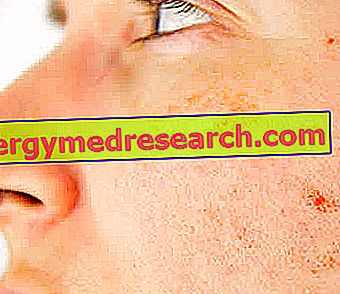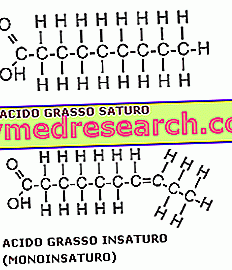The causes of hirsutism can be of various origins and nature. Below, all the factors known to date that are able to give rise to this disorder will be briefly described.
Idiopathic hirsutism

Hirsutism of ovarian origin
The most frequent cause of this type of hirsutism is represented by the polycystic ovary syndrome . It is a heterogeneous disease with various clinical manifestations, ranging from moderate to severe hirsutism, from alterations of the menstrual cycle to amenorrhea (absence of cycle). Most patients have testosterone levels at the upper limits of normal or only moderately elevated, sometimes elevated androstenedione levels are, more rarely, increased prolactin. An increase in insulin may also be present. Testosterone concentration may be normal, even if the total percentage of free (active) testosterone is high. Hirsutism of ovarian origin is caused by an altered relationship between LH and FSH at the level of the adenohypophysis, which causes an increase in LH and an inhibition of FSH. LH stimulates the ovary to produce androstenedione and testosterone; therefore, excess LH results in an overproduction of these hormones. It is likely that the incorrect secretion of LH and FSH by the pituitary gland is due in turn to alterations of the hypothalamus, which "badly" informs the same pituitary gland and causes it to release altered concentrations of LH and FSH.
Less frequently, hirsutism of ovarian origin may be due to an increase in the number of cells in the ovary, both epithelial and connective (stromal cells). It is a fairly common condition in women who have already entered menopause. In this case, hirsutism is quite pronounced and is often associated with signs of virilization. Testosterone levels have risen sharply. Finally, many ovarian cancers are capable of producing androgenic hormones. In these cases, the signs of virilization are marked, deteriorate rapidly, and the blood levels of testosterone are high, comparable to those of humans.
Hirsutism of adrenal origin
Hirsutism of adrenal origin is due to the defect of an enzyme that belongs to adrenal cortical cells (the portion of adrenal that produces androgenic hormones), or to an adrenal cortical tumor, always producing androgens. In the first case, hirsutism is due to hyperstimulation of the pilo-sebaceous unit by androstenedione (the androgen produced by the adrenal gland), while there is no increase in skin sensitivity to androgens. The defect of the enzyme causes an increase in the production of adrenal androgens. For this reason, the same defect can be inherited genetically, but can also be acquired in a non-hereditary way, without the presence of family members suffering from the same problem. Tumors that cause hirsutism are benign (adenomas) or malignant (carcinomas), again of the adrenal cortex. They are more frequent in women between 30 and 40 years and are characterized by the sudden appearance of virilization.
Hirsutism due to excessive androgen synthesis
As can be easily understood, hirsutism due to excess androgen production is caused by an excessive synthesis of these hormones, both from the ovaries and from the adrenal cortex.
Iatrogenic hirsutism
Iatrogenic hirsutism is linked to the administration of drugs that stimulate androgen production. These are anabolic steroids, the progestogens derived from norgestrel (also present in some birth control pills), danazol (which inhibits the pituitary gland), cortisone and its derivatives. Excessive hair growth has also been reported in patients who have used Minoxidil, an antihypertensive drug also used against alopecia (hair loss). In general, in iatrogenic hirsutism, hair growth is spread over the entire body surface, with a minimal thickening of the hair root.
Hirsutism from other causes
In less frequent cases, hirsutism can be caused by causes other than those described so far. These causes are generally hormonal disorders such as Cushing's syndrome (increased levels of the hormone cortisol), hypothyroidism and acromegaly (excess production of the GH hormone).
Hyperandrogenism and menopause
Menopause is characterized by a reduction in estrogen which, in turn, causes an increase in the production of LH, which increases the production of androgens. In these cases, therefore, hirsutism could originate during the menopausal age.



